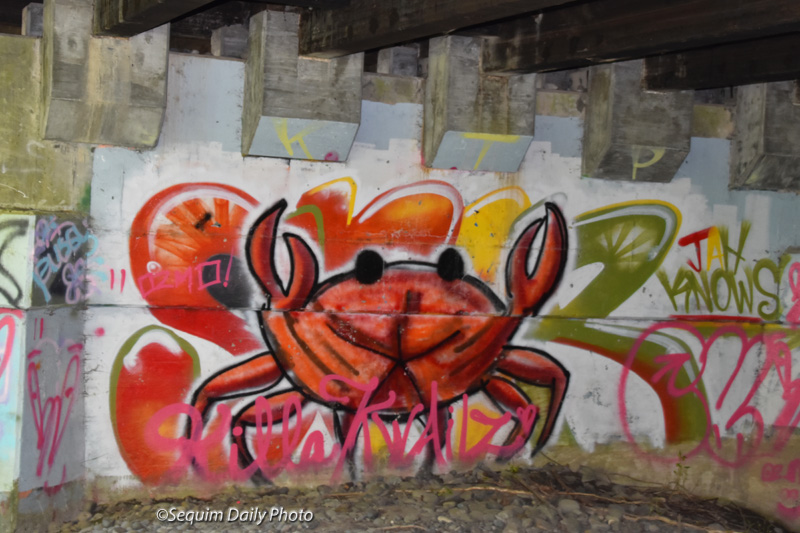
We don’t have a lot of graffiti in Sequim but it can sometimes be found under our bridges. This happy looking crab is on one of the concrete piers under the Ward Bridge that I showed you yesterday.
Views of Sequim, the Olympic Peninsula. . .and beyond

We don’t have a lot of graffiti in Sequim but it can sometimes be found under our bridges. This happy looking crab is on one of the concrete piers under the Ward Bridge that I showed you yesterday.
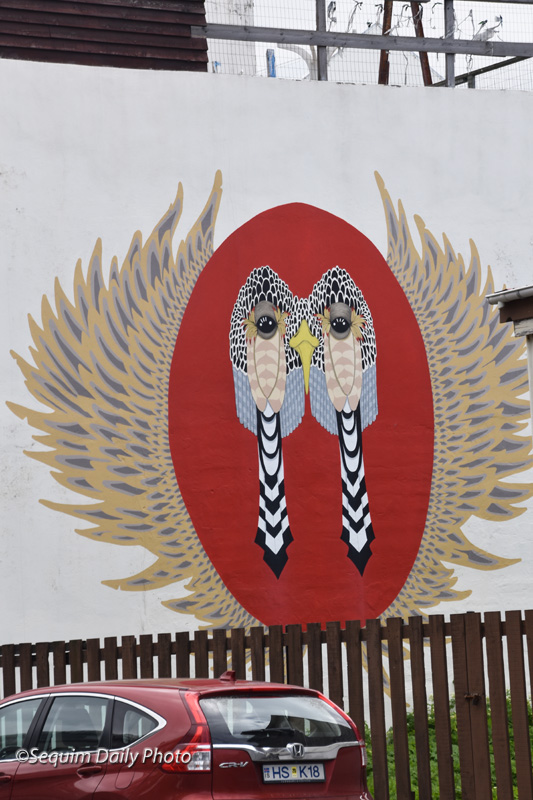
Some of the murals I saw in Reykjavik were colorful, like this one.
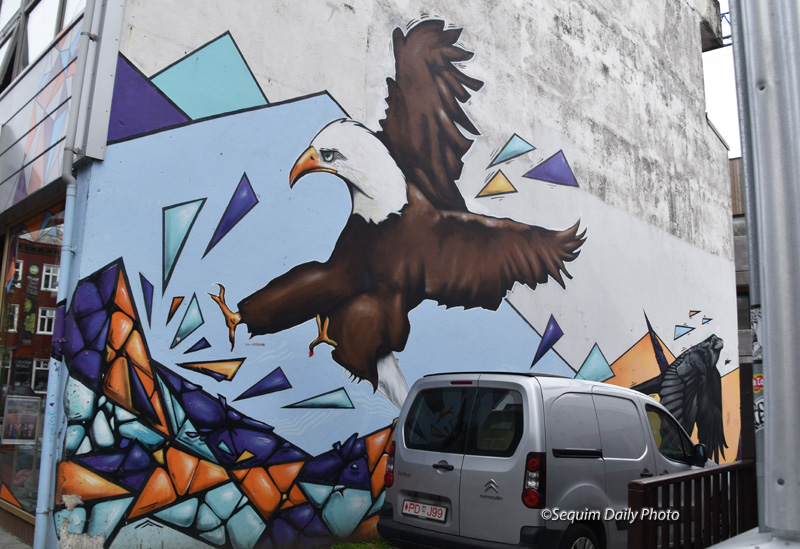
And this one. Its colors seem to subtly wrap around the edge of the building on the horizontal panels, above left.
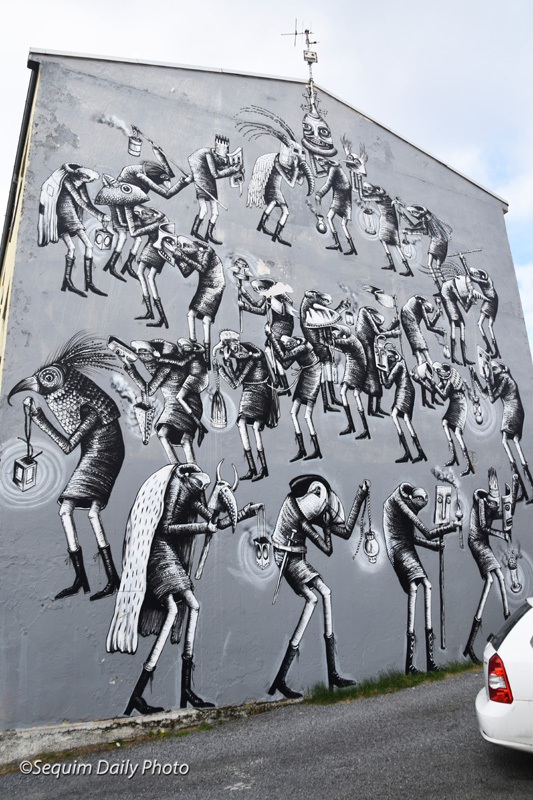
But the mural didn’t need to have a lot of color to be interesting, like this one in a residential area.
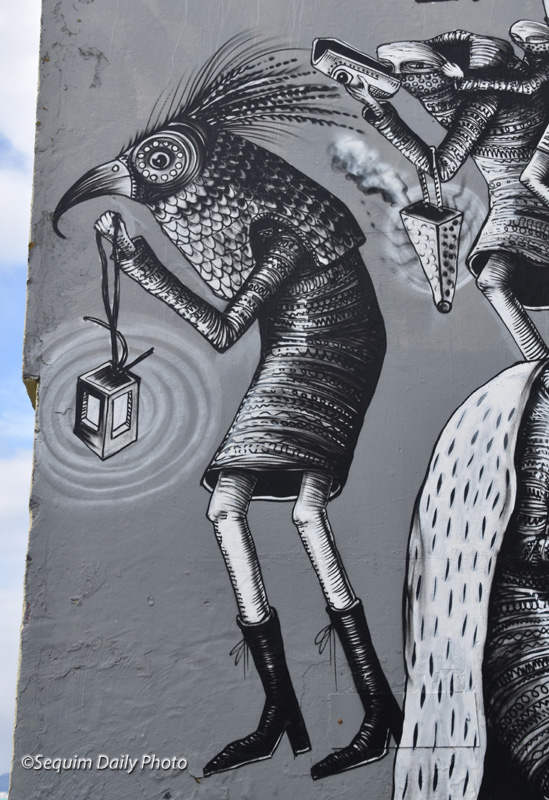
The detail was amazing.
Are you ready to see some of the other reasons we went to Iceland? I’ll show you tomorrow.
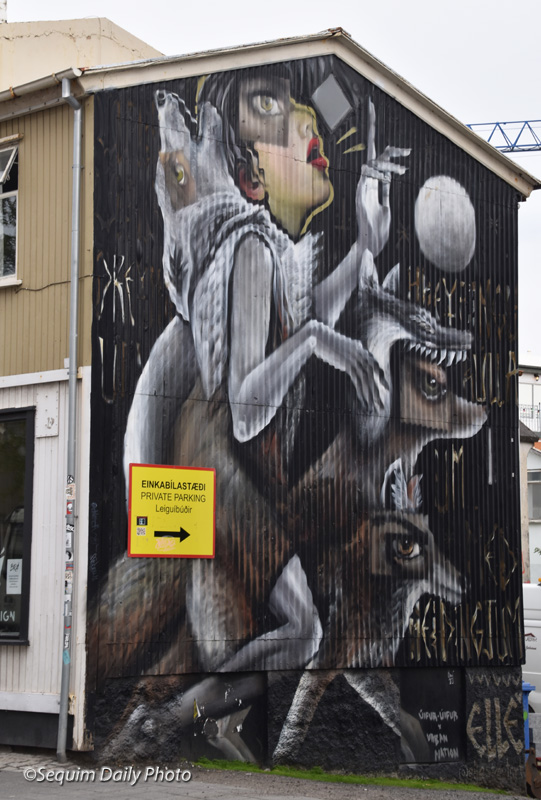
When faced with graffiti, people in Reykjavik found that if they treated their blank walls as canvases and invited or commissioned art on them that there was less likelihood that they would be tagged. The result is a great array of art with many subjects and styles.
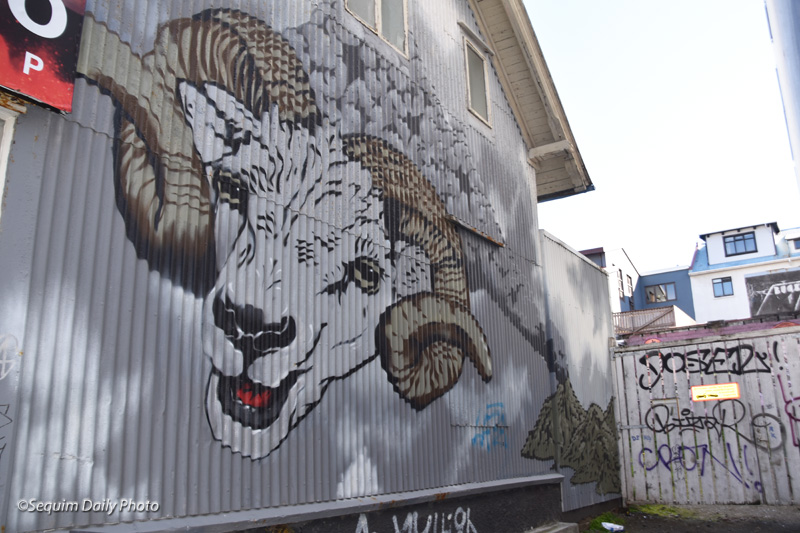
Many of the pieces I found were in downtown shopping areas.
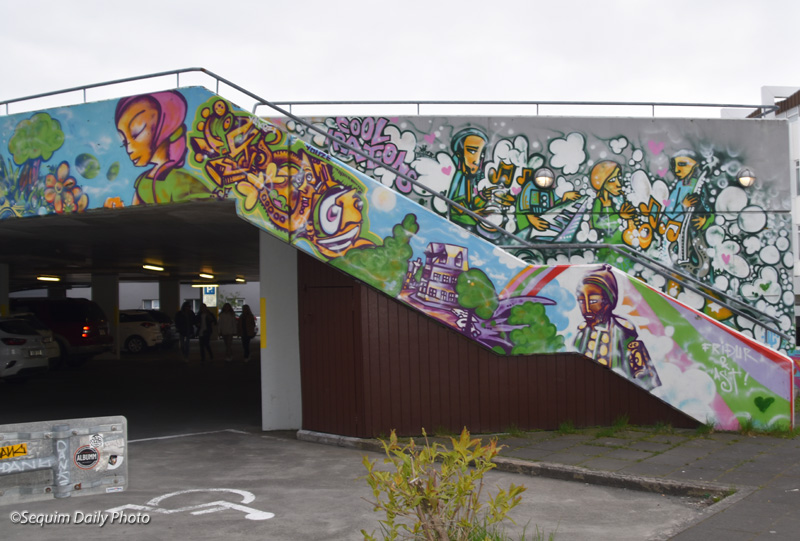
It adorned parking structures.
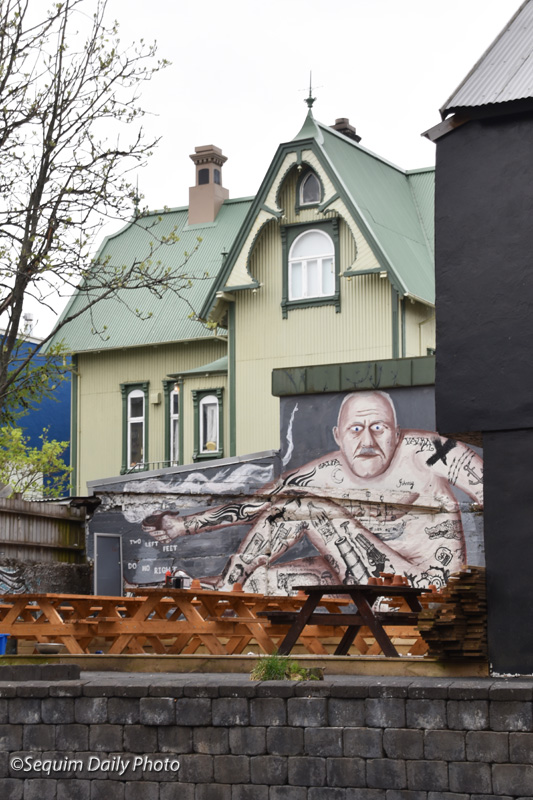
I found it on courtyard walls, set back from streets.
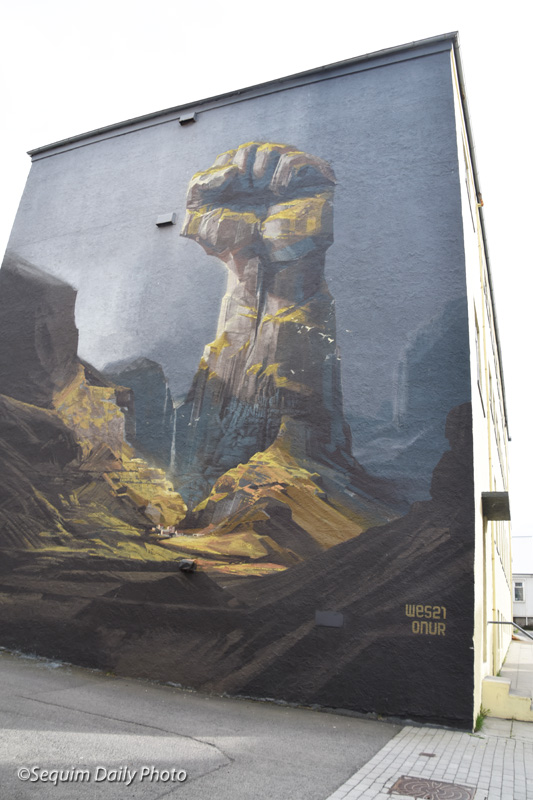
And it certainly wasn’t boring. I’ll show you more tomorrow.
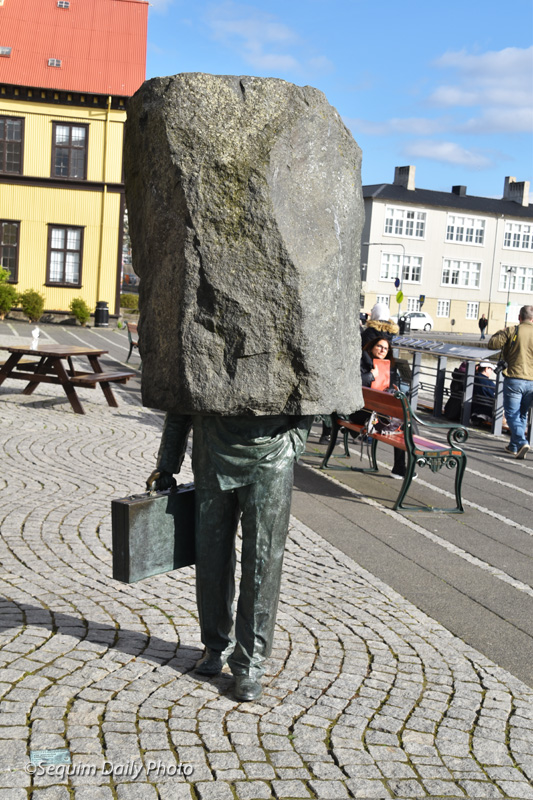
It’s fun to discover public art in a new city. This basalt and bronze sculpture, “Unknown Bureaucrat,” by Magnus Tomasson, is found walking toward Reykjavik’s City Hall.
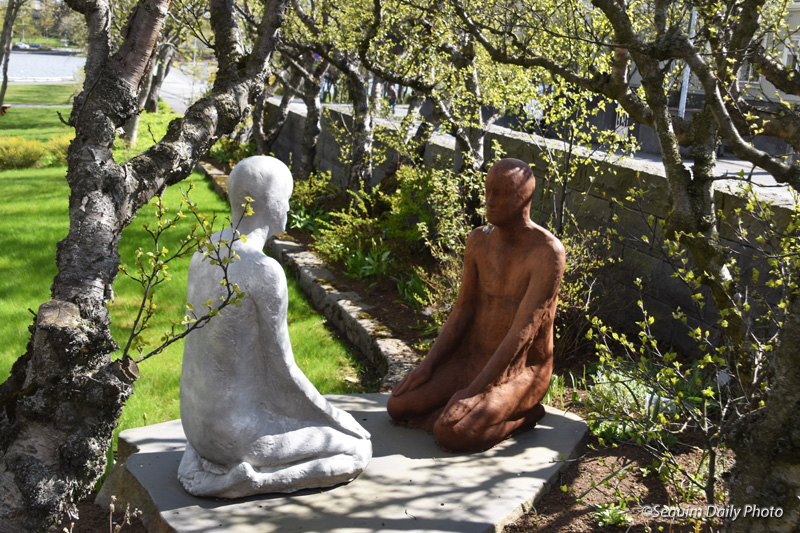
We found many other sculptures in parks and, like this one, in residential areas.
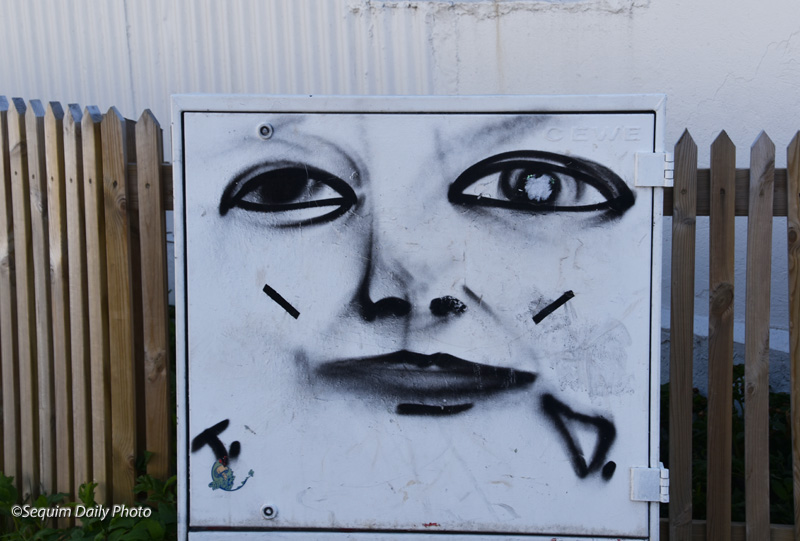
And there was fence art, too. Tomorrow I’ll show you what I found on some of the walls in Reykjavik.
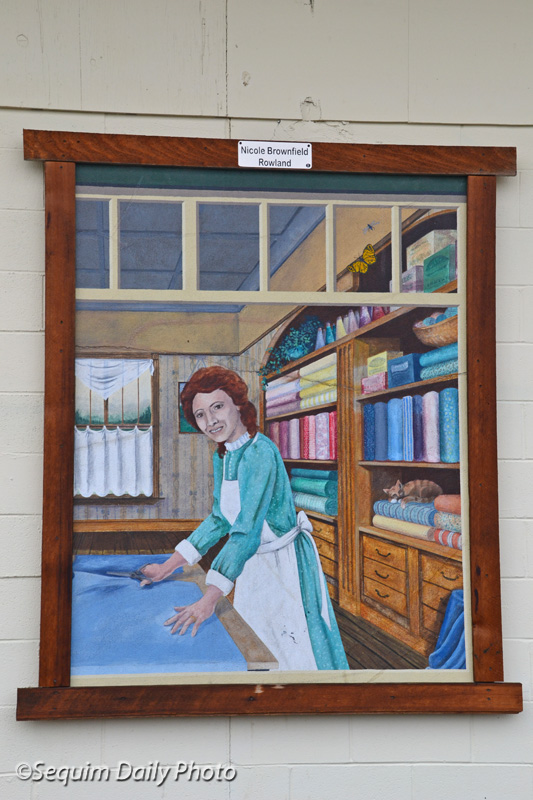
I took my winter-grimed car to a do-it-yourself car wash recently and when I finished I drove through to a set of murals on the back of Sequim’s Museum and Art Center. I’ve been in the front door but not the back. Here was a mural titled “Nicole Brownfield Rowland,” a woman I assume is from one of our pioneer families.
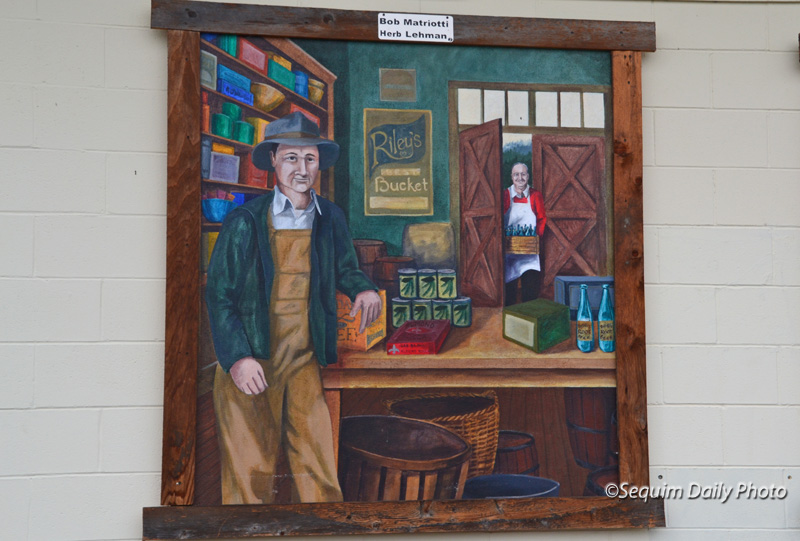
Bob Matriotti and Herb Lehman are named in this mural.
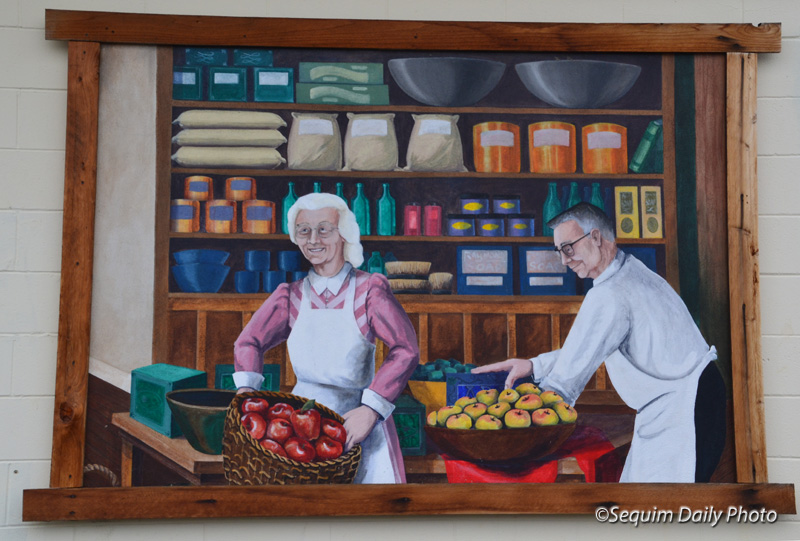
And here are two unnamed folks I’m calling The Apple People. I didn’t check carefully but it doesn’t look like these murals are signed.
The Sequim Museum and Art Center is scheduled to move this summer into a new building currently under construction on North Sequim Road. I don’t know if these murals on their current Cedar Street building will move, too.
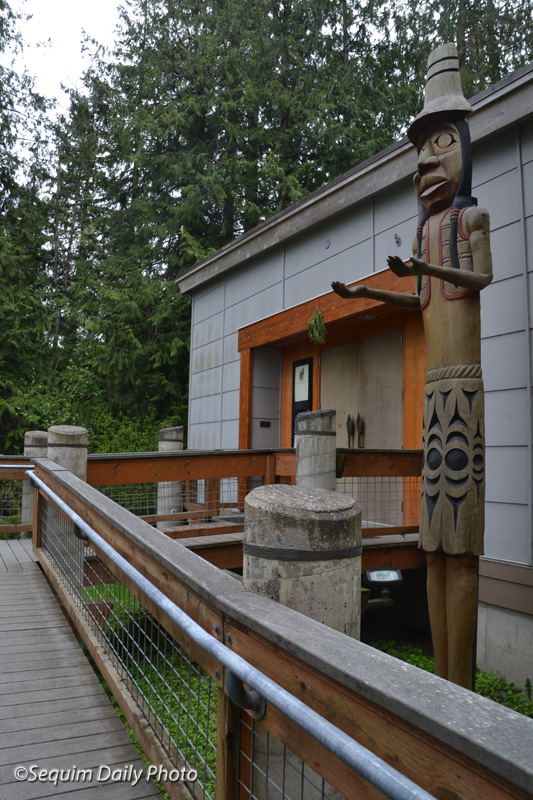
The Peninsula College Longhouse is the first traditional longhouse in the nation on a community college campus. It was built as a collaboration between the Peninsula College and six Tribes in our region, the Hoh, Quileute, Makah, Port Gamble S’Klallam, Jamestown S’Klallam and the Lower Elwah Klallam. The Longhouse is known as the Longhouse “House of Learning” and it functions as an art gallery featuring Native artists as well as hosting tribal ceremonies and and a variety of programs from film screenings and classes to study halls and summer camps.
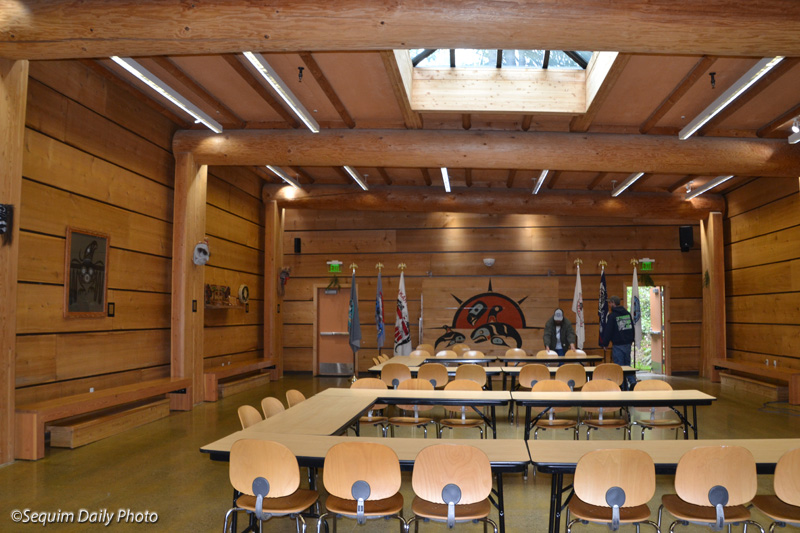
The interior great room is warm and welcoming, styled with updated features that are reminiscent of a traditional longhouse, including long benches along the walls, a skylight to represent a traditional smoke hole and sunlight cast onto the floor to represent a fire pit.
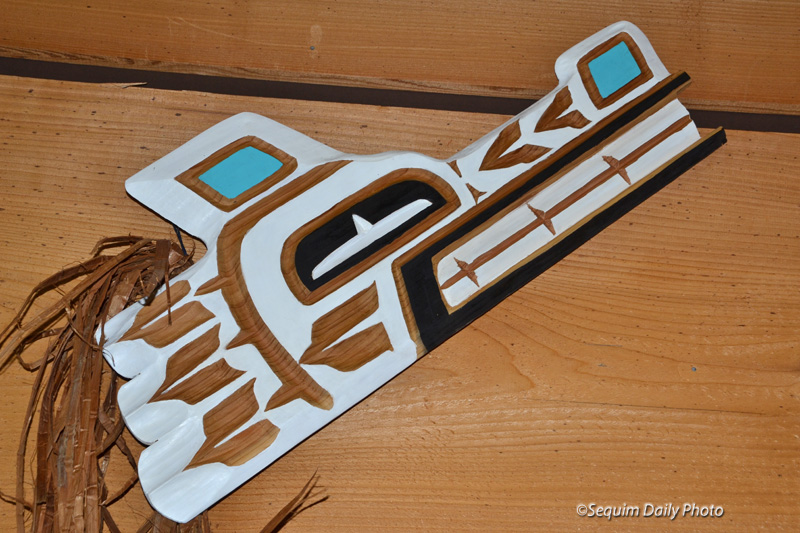
Native art and carvings line the walls of the great room. There are masks which represent traditional mythological creatures, drums, a painting, and an eagle blanket that was created as a joint project by a student group.
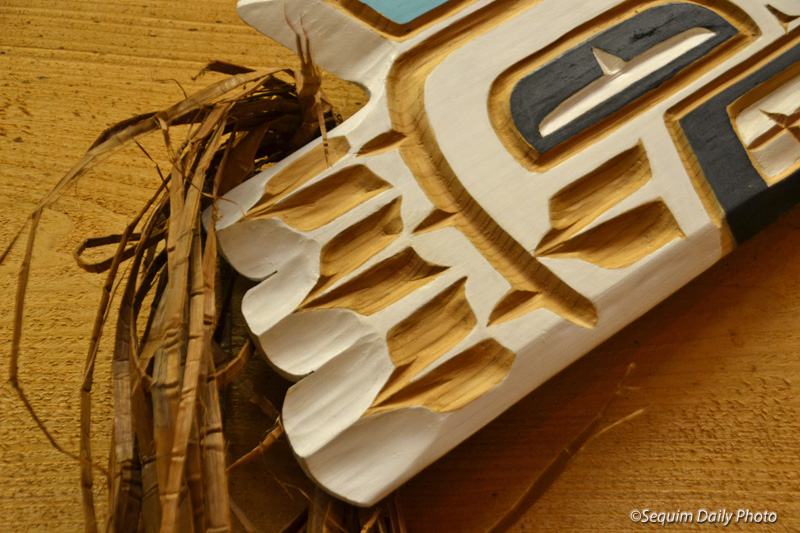
This is a detail of one of two wolf masks carved by Quileute Tribal Member David Jackson and designed by Evinjames Ashue of the Hoh Tribe.
I have additional photos of Longhouse artwork that I plan to post from time to time. There is some beautiful art there.
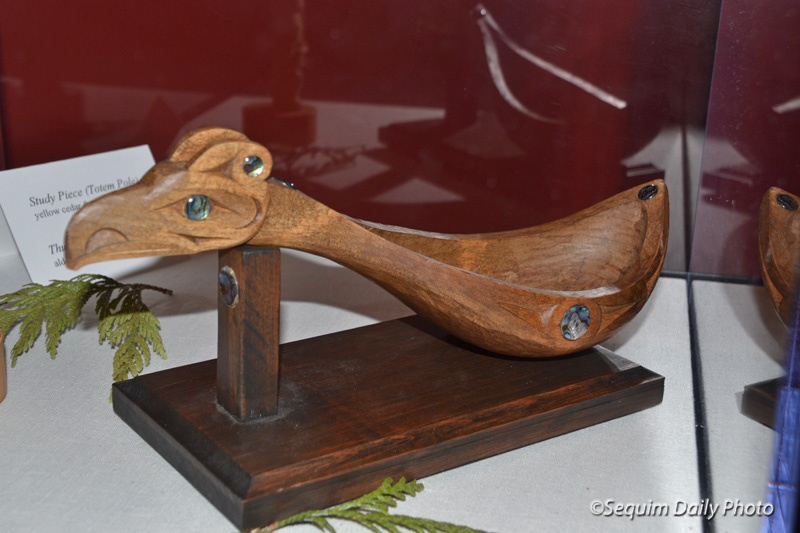
The carvings of Dusty Humphries, Sr. were featured at the Peninsula College Longhouse for three months recently. I got there last week on the second to last day of the exhibit. I’m sorry I couldn’t publicize the beautiful show to locals before it closed.
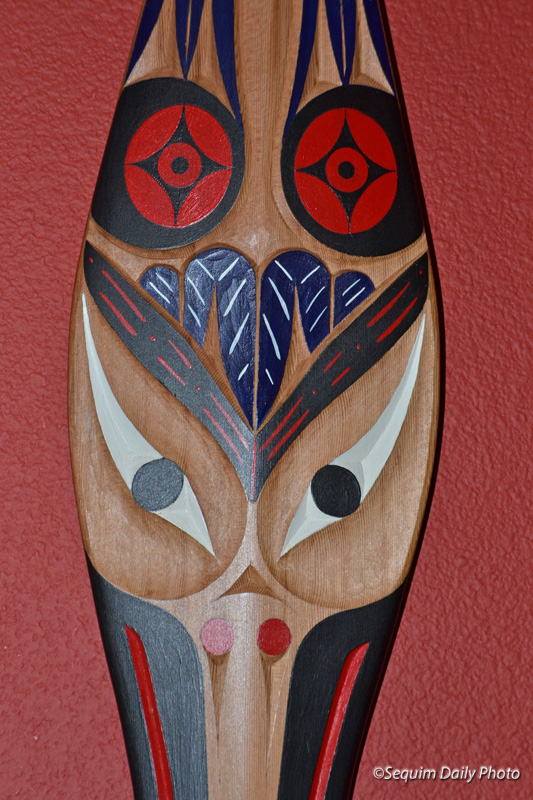
Humphries is of the Jamestown S’Klallam and Makah Tribes and his work explores Native American themes. The detail above is part of a seabird paddle.
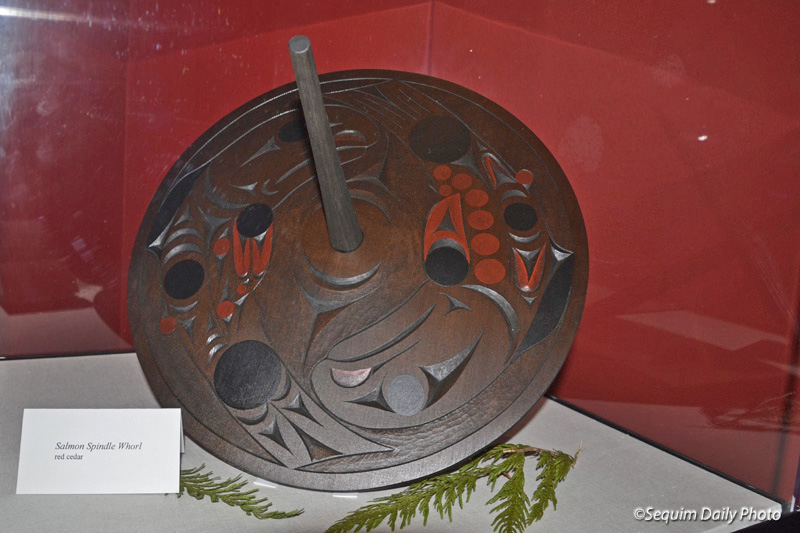
This is a Salmon spindle whorl. I’ve lightened the shot to show more of the detail. It’s a deeply colored red cedar piece, approximately 18 inches (approx. 1/2 meter) across.
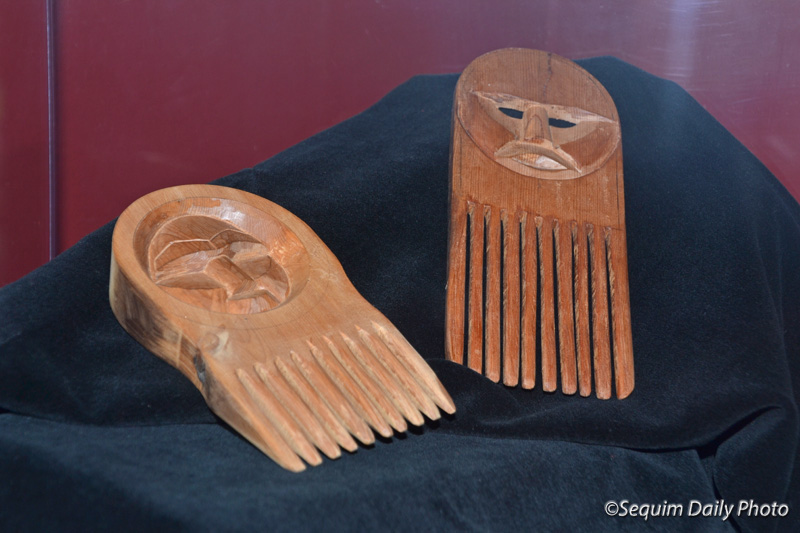
Early versions of these contemporary combs have been found in local archaeological digs. Similar pieces from one dig were displayed by the Lower Elwah Tribe a couple of years ago but photos were not allowed. I was pleased to photograph these contemporary beautiful, functional pieces.
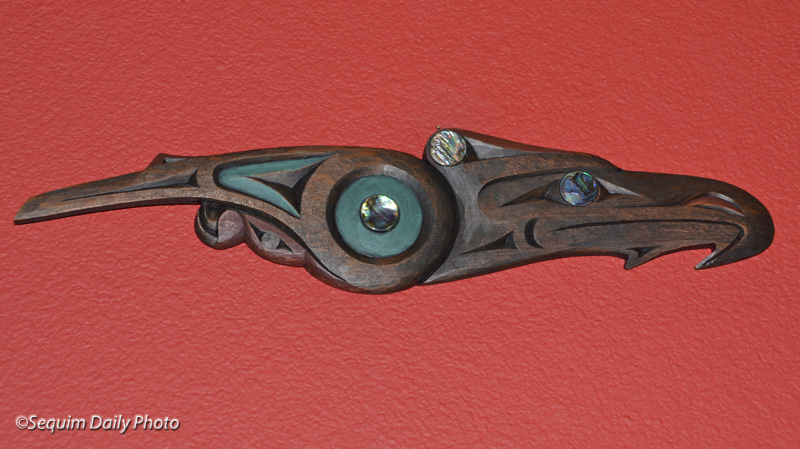
This piece was carved from yew with applied abalone shell. There were other works on display but these were some of my favorites.